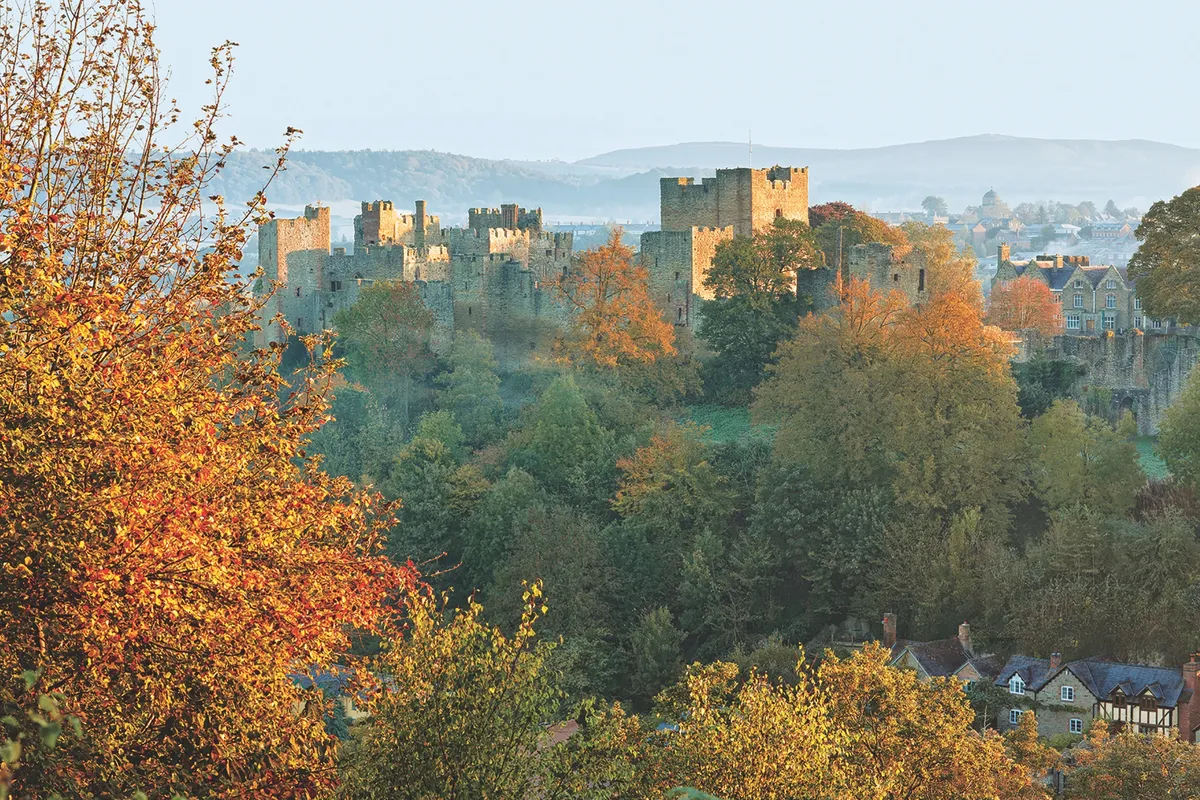Meander quietly through Mortimer Forest, straddling the Shropshire and Herefordshire border, and you might spot one of the rarest sights in the world.
Living within this 1,029-hectare wood, two miles west of Ludlow, is an animal that doesn’t exist anywhere else on the planet: the long-haired fallow deer. Its fur is twice as long as that of its more common cousins – not ‘lockdown locks’ but the result of a gene mutation.
First discovered in the 1950s, the 80-strong herd is considered to be the only one in existence. Tread carefully through their favoured coniferous plantations and you may hear them, if not see them, during their autumn rut.

Royals and phantoms
Although formed in the 1920s by the Forestry Commission, today’s Mortimer Forest covers the remnants of three ancient Saxon hunting forests: Bringewood, Mocktree and Deerfold. Saxon forests were areas set aside for royal hunting, and nearby Ludlow Castle played host to many a royal visit over the centuries.
Watch out for goshawks weaving between the dense coniferous trunks. Also known as the phantoms of the forest, they twist and dart at lightning speed when hunting. Mortimer Forest is a local stronghold for these large, rare hawks, with up to 20 pairs nesting here.
You may also like:

Vinnals viewpoint
A series of well-signposted waymarked trails makes exploring Mortimer Forest easy. They’re not all wide, stony forest tracks, though. Some are muddy and steep, so appropriate footwear is advisable at this time of year.
High Vinnals is the forest’s highest spot at 375m. Gaze west across the wooded hills of the Welsh Borders towards Radnorshire, look south-east towards the Malvern Hills, and north-east over Ludlow and Titterstone Clee Hill.
The invigorating nine-mile Climbing Jack trail is perfect for exploring the variety of habitats the forest has to offer. It starts at Vinnals Car Park, west of Ludlow, as does the shorter three-mile Vinnals Loop trail, which also summits the highest spot.

Victorian vintage
Opposite Whitcliffe Car Park, a level path follows the route of a Victorian engineering feat. Mostly hidden underfoot, there are clues to its existence in the landscape. Huge aqueducts cross wooded valleys, carrying clean water from Elan Valley in mid-Wales on a slow-moving 70-mile journey to Birmingham. And it’s all done by gravity alone, with the water travelling at less than two miles an hour.
